|
Displaying items by tag: Stolen
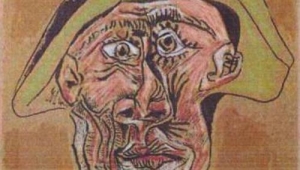
A Romanian woman has been arrested in Rotterdam in connection to an art heist that rocked the Netherlands in October 2012. The 19-year-old woman, who is the girlfriend of one of the three suspects currently being held in Romania for alleged involvement in the heist, is thought to have helped the thieves haul the seven stolen masterpieces out of the country.
Police claim that after the robbery, the paintings were taken to a home in Rotterdam where the frames were removed. The paintings were later taken to Romania where prosecutors are investigating the mother of one of the suspects who claims that she burned two of the stolen works.
The robbery, which took place at the Kunsthal museum, was the biggest art theft in two decades in the Netherlands. The stolen works, which are part of the private Triton Foundation collection, include masterpieces by Pablo Picasso (1881-1973), Claude Monet (1840-1926), Henri Matisse (1869-1954), and Paul Gauguin (1848-1903) and are believed to be worth between $66 million and $266 million. Among the masterpieces lifted by the thieves were Picasso’s Harlequin Head (1971), Monet’s Waterloo Bridge, London and Charing Cross Bridge, London (1901), and Matisse’s Reading Girl in White and Yellow (1919).

Phivos Istavrioglou, a resident of Athens, Greece, has been arrested in connection to the botched theft of a Salvador Dalí (1904-1989) painting from a New York gallery last June. Security cameras captured Istavrioglou as he made off with the watercolor and ink work, which is valued at approximately $150,000. After surveillance images were released to the public, a panicked Istavrioglou mailed the Dalí painting back to the Upper East Side gallery in a cardboard tube.
Fingerprints left on the returned painting helped officials track down Istavrioglou, 29, and he was arrested on Tuesday, February 19, 2013 at John F. Kennedy airport in a sting that lured him to the United States from Italy. After his arrest, Istavrioglou appeared briefly in a Manhattan court where he pleaded not guilty to grand larceny in the second degree. Istavrioglou’s bail was set at $100,000.
The stolen painting, Cartel de Don Juan Tenorio (1949), was on view at the Venus Over Manhattan gallery as part of its inaugural exhibition, which opened in May 2012.

France will return seven paintings stolen from their Jewish owners by Nazis during World War II, part of an ongoing effort to give back hundreds of plundered works that still hang in French institutions including the Louvre. The seven paintings were all stolen or sold under duress as their owners fled Europe during the Nazi occupation. The works were to be displayed in Adolf Hitler’s art gallery, which he planned to build in his birthplace in Austria but never came to fruition.
At the end of World War II, with most of Europe in shambles, many artworks were left unclaimed and thousands of French-owned works found homes in the France’s various museums. Government efforts to return these works gained steam last year at the urging of the owners’ families. The French government believes that there are approximately 2,000 Nazi looted artworks in state institutions; inaccurate archiving and the challenge of properly identifying paintings has made the restitution process a long one.
Six of the seven works to be returned were owned by Richard Neumann, an Austrian Jew who sold his remarkable art collection for a fraction of its value in order to flee Europe. His collection included works by Alessandro Longhi (1733-1831), Sebastiano Ricci (1659-1734), and Gaspare Diziani (1689-1767). The paintings were ultimately placed in the Louvre, the Museum of Modern Art of Saint-Etienne, the Agen Fine Arts Museum, and the Tours Fine Art Museum after the war.
The other painting to be returned is Pieter Jansz Van Asch’s (1603-1678) The Halt, which was stolen by the Gestapo in Prague in 1939 from Josef Wiener, a Jewish banker who was deported and later died in a concentration camp. The Dutch masterpiece hung in the Louvre for years until Van Asch’s family tracked it down online in the mid-2000s. The French Prime Minister, Francois Fillon, approved the return of the painting to the family last year.
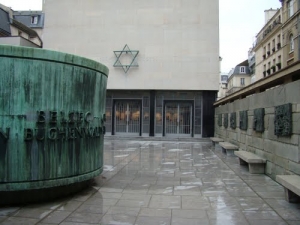
French senator Corinne Bouchoux is urging French museum officials to take closer looks at their prized holdings as many public art collections contain works looted by Nazis during World War II. Bouchoux has led an investigative committee devoted to uncovering Nazi-looted artwork in France, which prompted her to ask museums to be more thorough in their provenance research.
Bouchoux revealed that out of the 100,000 artworks stolen from Jewish families in France and Belgium, approximately 2,000 of those works were still present in French museums. Many of these museums were designated “national museums of recovery,” which allowed the institutions to keep the works as long as they did not become property of the state and if identified, the rightful owners could reclaim them.
Bouchoux wrote her doctoral thesis, which has just been published as a book, on Nazi-looted art in France and has suggested nine proposals to direct the stolen works back to their rightful owners or offer restitution for them.
In line with Bouchoux’s efforts, the Shoal Memorial in Paris presents the exhibition Looting of the Jews: A State Policy (1940-44), which grants visitors a glimpse of the goods, including artworks, that originally belonged to Jews in France. The show is on view through September 29, 2013.
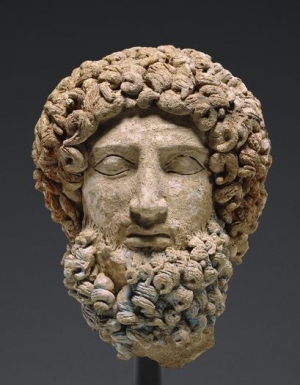
For years, Italy, Greece, and other ancient lands have accused American museums of ignoring evidence that antiquities in their collections were looted from archaeological sites. Five years ago, the Association of Art Museum Directors (AAMD) responded by making the requirements for acquiring ancient works much more stringent. The revised guidelines advised American museums against acquiring works unless solid proof existed that the artifact, prior to 1970, was outside the country where it was discovered in modern times, or was legally exported from that country after 1970.
1970 remains an important date, as it marks the year UNESCO put a stop to the illicit trafficking of antiquities. The year is now regarded as the standard cutoff for collecting. Works that appear on the market without documentation dating back that far are much more likely to have been stolen, looted, or smuggled out of their countries.
On Wednesday, January 30, 2013 the AAMD announced a few additional restrictions for American museums. The AAMD, which has 217 member museums in North America, now requires institutions to post a public explanation on the AAMD’s website if they acquire any ancient works with spotty ownership records. In addition, the museum much provide an image of the object, any known provenance information, and an explanation as to why they decided to acquire the work. If an institution fails to comply, they will be subject to ethical scrutiny and possible expulsion from the AAMD.
Officials hope that the tighter acquisition regulations will discourage American museums from obtaining questionable artifacts while supporting transparency between the United States and nations of origin who may lay claim to the antiquities.
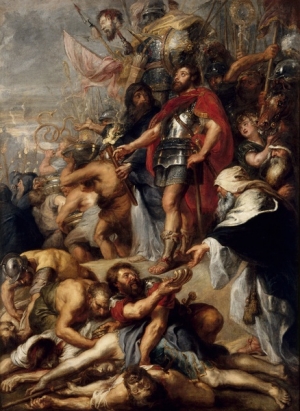
During the French Revolution, which lasted from 1789 to 1799, French troops took Flemish Baroque painter Peter Paul Rubens’ (1577-1640) The Triumph of Judas Maccabeus from the Tournai cathedral in Belgium. The work was whisked away to Paris and in 1801 it was sent to the Musée des Beaux-Arts in Nantes, France.
The Triumph of Judas Maccabeus is one half of a diptych that was commissioned for the cathedral by the bishop of Tournai in 1635. Napoleon’s army stole both The Triumph of Judas Maccabeus and its accompanying work, The Freeing of the Souls from Purgatory, which was returned to the cathedral in 1818.
Tournai officials are adamant about having the Rubens painting returned to the cathedral. Ruby Demotte, president of the French Community of Belgium, has penned a letter to French president Francois Hollande as well as to the French culture minister Aurélie Filippetti asking that the work be sent back to Belgium. Demotte made the same attempt last year but never received a response from the French government.
Tournai recently completed a major renovation of its cathedral and are hoping to finally reunite the two Rubens paintings.

On January 23, 2013, a three-judge federal appellate court in California heard arguments from the heirs and relatives of a prominent Hungarian art collector. The lead plaintiff, David de Csepel, is the great-grandson of Jewish banker Baron Mór Lipót Herzog whose legendary art collection once included works by El Greco (1541-1614), Anthony van Dyck (1599-1641), Diego Velázquez (1599-1660), Pierre-Auguste Renoir (1841-1919), and Claude Monet (1840-1926).
The case, which could be the last major art restitution case relating to the Holocaust, involves 40 artworks valued at $100 million that were seized by Nazis during World War II. Csepel argued that Hungarian courts acted unjustly as they have never returned the stolen paintings nor paid restitution to Herzog’s relatives. In fact, a number of paintings once belonging to Herzog remain in the collections of Hungarian museums.
The lawsuit is attempting to use U.S. courts to press charges against the Hungarian government, three of the country’s museums, and a university. However, the Hungarian government’s lawyers argue that U.S. courts have no jurisdiction on foreign soil, pushing to have the case played out in Hungarian courts or the International Court of Justice. The plantiff’s attorney, Michael Shuster, claims that the case is relevant for U.S. courts because most of the living heirs involved in the case are U.S. citizens and that Hungarian courts can be problematic.
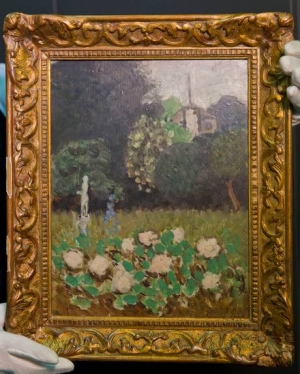
A painting worth $1 million by the French artist Henri Matisse (1869-1954) was recovered in Essex, England. Stolen from the Museum of Modern Art in Stockholm in 1987, the location of Le Jardin (1920) has remained a mystery for more than twenty years.
The discovery occurred when British art dealer Charles Roberts of Charles Fine Art was offered the Matisse painting by a Polish collector. Roberts ran a search on the Art Loss Register (ALR) database, a hub for information regarding stolen artworks, and found Le Jardin listed. Christopher A. Marinello, executive director and general counsel of the ALR, facilitated the painting’s recovery and it is currently being held in the organization’s office before being returned to Sweden in the coming weeks.
Le Jardin was the only artwork stolen during the 1987 burglary when thieves broke through the museum’s front entrance with a sledgehammer and unscrewed it from the wall. The burglars escaped just minutes before private guards arrived to investigate the scene. Following the robbery, the thieves made several attempts to sell the painting back to the museum for an exorbitant sum. Museum officials resisted, knowing that the Matisse painting was too well known to sell on the open market and that it would resurface eventually.

British art collector, Douglas A.J. Latchford, has spent decades building his reputation as one of the foremost experts in Khmer antiquities. Latchford, a resident of Thailand, was knighted in 2008 by the Cambodian government for admirably returning 14th-century Khmer artifacts.
In sharp contrast to his previous accolades, Latchford is currently the subject of a civil complaint files by the U.S. attorney’s office. Federal lawyers state that Latchford, referred to in proceedings as “the Collector,” bought a 10th century Khmer warrior statue known as the Duryodhana in the 1970s knowing that it had been looted from a temple during the Cambodian civil war.
While Latchford denies ever having owned the work, court papers claim that he purchased the statue from a Thai dealer who acquired the work from an organized looting network. Allegedly, Latchford then helped get the piece into Britain by concealing what was actually being shipped. Upon its arrival to the U.K., the auction house Spink & Son sold the statue to a Belgian collector in 1975. The collector’s widow is the Duryodhana’s current owner.
The widow approached Sotheby’s New York in 2010, hoping to sell the 500-pound sandstone statue. However, the sale was put on hold because of objections from the Cambodian government. While lawyers are hoping to return the work to Cambodia, the auction house still plans on selling the treasure, stating that there is no evidence to prove that the statue was looted or that it is the property of the Cambodian government.
Latchford has been collecting Cambodian antiquities for over 55 years and has donated many works to well-known institutions, including the National Museum in Phnom Penh and the Metropolitan Museum of Art. A judge is expected to rule on the Duryodhana case within the next few months.
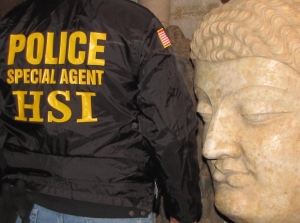
Subhash Kapoor, a once-established antiquities dealer in New York, has been the source of much controversy over the past few months. In July, authorities asked American museums to search their collections for any works obtained from Kapoor after it was revealed that he was in possession of looted antiquities. Allegedly, Kapoor has trafficked more than $100 million worth of stolen Indian artifacts and on December 5, authorities added to his list of thefts after a raid at the Port of Newark.
U.S. Immigration and Customs Enforcement agents with Homeland Security Investigations teamed up with Indian authorities and the Manhattan District Attorney’s office and seized more than $5 million worth of artifacts including a 14th century statue of the Hindu deity, Parvati, and four bronze figures from India’s Tamil Nadu region. It is believed that all of the works were stolen from Indian temples. The The Parvati statue has been in the possession of six different dealers and is marred by a litany of false provenances despite being listed on an Interpol database of stolen artworks.
Kapoor ran the Art of the Past Gallery on Madison Avenue from 1974 until his arrest last July. He has donated and sold antiquities to many distinguished institutions including the Metropolitan Museum of Art. Kapoor is currently facing criminal charges in India.
|
|
|
|
|